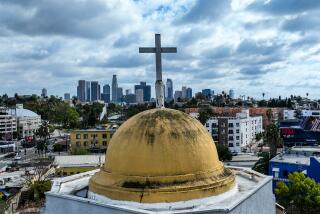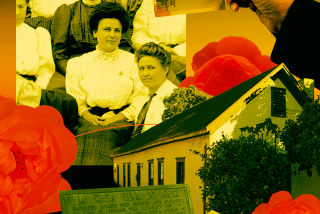Researcher Finds Surprises in Mission Walls : History: San Juan Capistrano church’s interior was built of volcanic tuff, not sandstone as previously believed.
The old mission church in San Juan Capistrano has been eroding for so long, most people thought it was all crumbly sandstone.
Not all, says an archeologist who has been trying to stop the deterioration and has turned up several surprises working on the 188-year-old ruin.
For one, the interior of the Great Stone Church is made of volcanic tuff, not sandstone.
For another, inside walls were painted with brightly pigmented lime washes that previous researchers may have mistaken for dirt.
“We have an idea it was a subtle palette of pinks, whites and turquoise,” said Frank Matero, director of the Architectural Conservation Laboratory at the University of Pennsylvania.
Matero said he had never seen a building in North America made of tuff.
“The stone is so soft, it can be carved with a penknife, and it’s very lightweight so it could be hoisted up,” said Matero, a team leader on one part of a $2-million, 10-year restoration project.
Matero said the group was coming up with new information on how to preserve sandstone, tuff and old plaster. They are experimenting with epoxies and other binders to find the best materials for saving the ruins.
The mission is famous as the nesting place for swallows who migrate each spring from South America. Its Great Stone Church was begun in 1797, finished in 1806 and destroyed in an 1812 earthquake that killed 40 people at Sunday Mass.
It is not clear where the mission builders got the volcanic rock, which is found throughout Southern California.
But Matero said there was evidence that Native American craftsmen helped finish the church after Spanish master mason Isidro Aguilar died. Their lack of experience may have contributed to the collapse, the archeologist said.
“The mission has a combination of very traditional Spanish techniques, but there’s some very idiosyncratic techniques in the construction that suggest uneducated local input,” he said.
More to Read
Sign up for Essential California
The most important California stories and recommendations in your inbox every morning.
You may occasionally receive promotional content from the Los Angeles Times.









